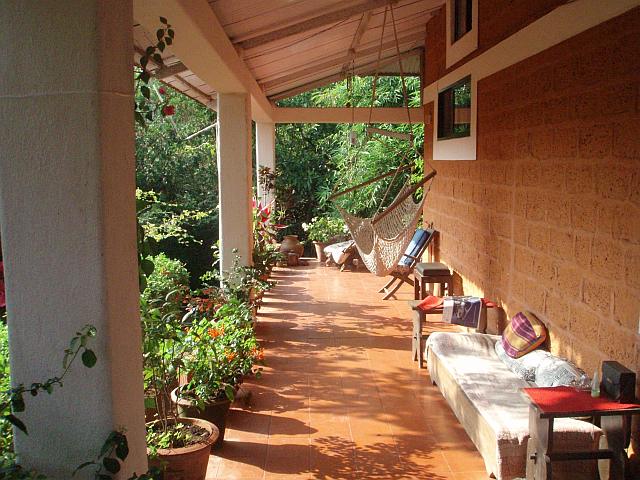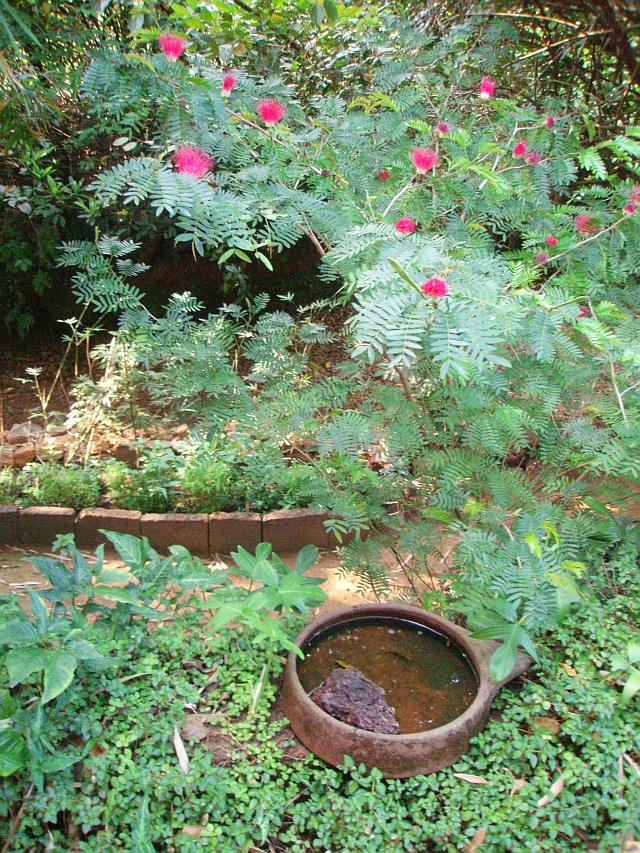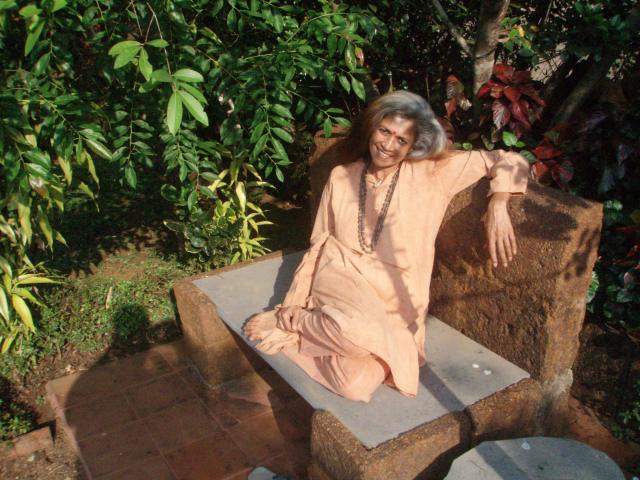With Sayoni Sinha
Amboli is not so much the poorer cousin of Matheran as much as the orphan of Maharashtra's tourism board. Monsoon revelers flock here to enjoy the waterfalls, but outside of this appeal this tiny hill station evokes little recall; the proximity to Goa further adds to its neglected angst. Why would you fly down to Dabolim and not soak in the azure of Palolem beach instead? Yet the two-hour drive down from Goa airport to Amboli is a balmy exercise in learning that the Goans still admire their football with a Latin, crusade-like zeal between innocuous coastal towns. Then Goa becomes Maharashtra; the bikini belt succumbs to a more demure equation with the coast.
One hundred and eighty species of butterflies inhabit the forests surrounding Amboli. Your rickshaw driver might sometimes spin a yarn on how tigers are spotted at night on the spiral that leads to Amboli, but butterflies and birds are more likely to bump into you.
When Zicky Sinha turned 45 in 1998, he threw up a top job with Tata Tea to pursue his dream. A well-maintained garden and a cottage-like home, both which overlook a horseshoe of reserve forest of stunted deciduous lush, comprises Yoga Republic. Torrential rain and the parky chill that winter brings restricts the growing season for plants to barely two-three months. Deforestation can be an irreparable disaster in an ecologically fragile zone such as this, which explains why Sindhudurg, the district in which Amboli is nestled, is so often the hotbed of ecological activism to stave off dubious mining contracts and the other perquisites of India Shining.
Taking her cue from her husband's passion, Varsha Sinha too enrolled at the Bihar School of Yoga and became a trained professional in the science; her adopted sanyasin name is Dharma Priya. "Anu Agarwal, the model-actress, was my roommate, before she was thrown out. She returned after her accident, but I don't want to get into it. Even then I would tell her that Osho is more her scene than yoga. I was at Osho between 1979 to 1984," says Dharma Priya, 50. With a mane of grey tresses cascading down her lean face and cheekbones that glisten against large, shamanistic eyes, she has a stridently spiritual charisma. It also helps that she has had some experience with student theatre in Delhi during the early '70s.
Their daughter, Katyayani, a graduate in hotel management from the Taj catering college in Aurangabad, completes the yogic triangle. Her specialty is fusion and ayurveda cuisine, custom-made for patrons based on their specific health requirements. The ridge gourd pie is a staple classic from her kitchen. Called 'dodka' locally, ridge gourd is beneficial for your blood pressure, weight loss and is high in fibre. You don't miss the meat; you don't miss the booze, though Varsha Sinha clarifies that "we don't enforce any rules. Guests are welcome to have a good time with a tipple by night if they so please because, at the end of the day, Yoga Republic is also a holiday destination."
Meditation and yoga programmes too are custom-tailored to meet a client's requirements: "Dharma Priya handles the software, I handle the hardware (he is also a certified doctor who served with the Indian army for a while), and Kate takes care of the epicurean element," says Zicky. According to him, it takes at least three days for a person to adjust to the vibes of Yoga Republic, even if Yoga Republic does not discourage fly-by-night ascetics to pass by this haven.
The rooms are basic but clean, functional; no room in the house does not overlook a swathe of green. It is perched next to a fresh water stream that runs from May until February; Amboli enjoys the highest rainfall in Maharashtra. A copper water boiler, heated by lighting twigs that have fallen naturally, make for a silky bath. "Copper dissolves naturally with mineral-rich water and this lends the hot water its special tingly texture. Despite the perennial nip in the air, bathing here can be fun!" says Dharma Priya.
A room, with all meals and three one-hour yoga sessions per day, comes at Rs 4,000 per day. Jungle yoga, where more hardcore devotees can practice yoga "where it is meant to be practiced" costs around Rs 7,000. Yoga Republic entertains a clientele from mainly France, Belgium and Sweden, with a sprinkling of Brits, Australians, and practically whoever stumbles upon this recess. "We don't discriminate between Indian and non-Indian clientele with our prices. We are very clear that this is a rare experience, both for Indians and foreigners," says Zicky Sinha, who also runs a free clinic for villagers in the afternoon.
"Jungle yoga is crucial because humans have a psychic connection to nature, and vice-versa. The jungle is where yoga happened, where it achieved its finer nuances. There is an intrinsic energy that is released if yoga is performed in the jungle. There are times when we perform near a cliff and the energy of meditation and of the mantras is so intense that a wind whips up. With appropriate chanting this rousing of nature is controlled, but I have had experiences where I almost felt that the tents are going to fly off into impromptu parachutes! This is rare though. For the most part, jungle yoga camps are safe, hugely rewarding experiences that are essential to exploring the power of this craft," says Dharma Priya.
It is recommended that you call seven days in advance to set up a camp (for jungle yoga) in the adjacent forest. Here, Katyayani, the in-house chef, will make a perishable oven from the earth around the site so that grilled vegetables and pizzas can add to the ascetic enchantment.
Closer home, at the main yoga centre, the cleverly developed garden and landscaping is jungle enough. For instance, the appearance of a Hanuman langur amidst shuddering branches of foliage after a meditation session is enough to alarm you. "This langur is after the sparrow eggs. That's what he's here for. You should never have fed him!" Zicky lambasts Dharma Priya at this flash sighting.
"He doesn't eat sparrow eggs, okay! Stop spreading ridiculous rumours. He just likes this place," insists Dharma Priya.
The drama eventually resolves itself as the langur recedes into the underworld of the neighbouring forest.
Dawn is an aviary of imagined flautists, but residents are encouraged to sleep until as long as they deem fit. The instructors start their day at a quarter past four. "It takes three days to get into the rhythm of the place. We encourage residents to sleep through their natural sleep cycles for at least three days. From the fourth day onward it is all right if they wish to join us at dawn," says Zicky.
source=http://in.lifestyle.yahoo.com




0 comments